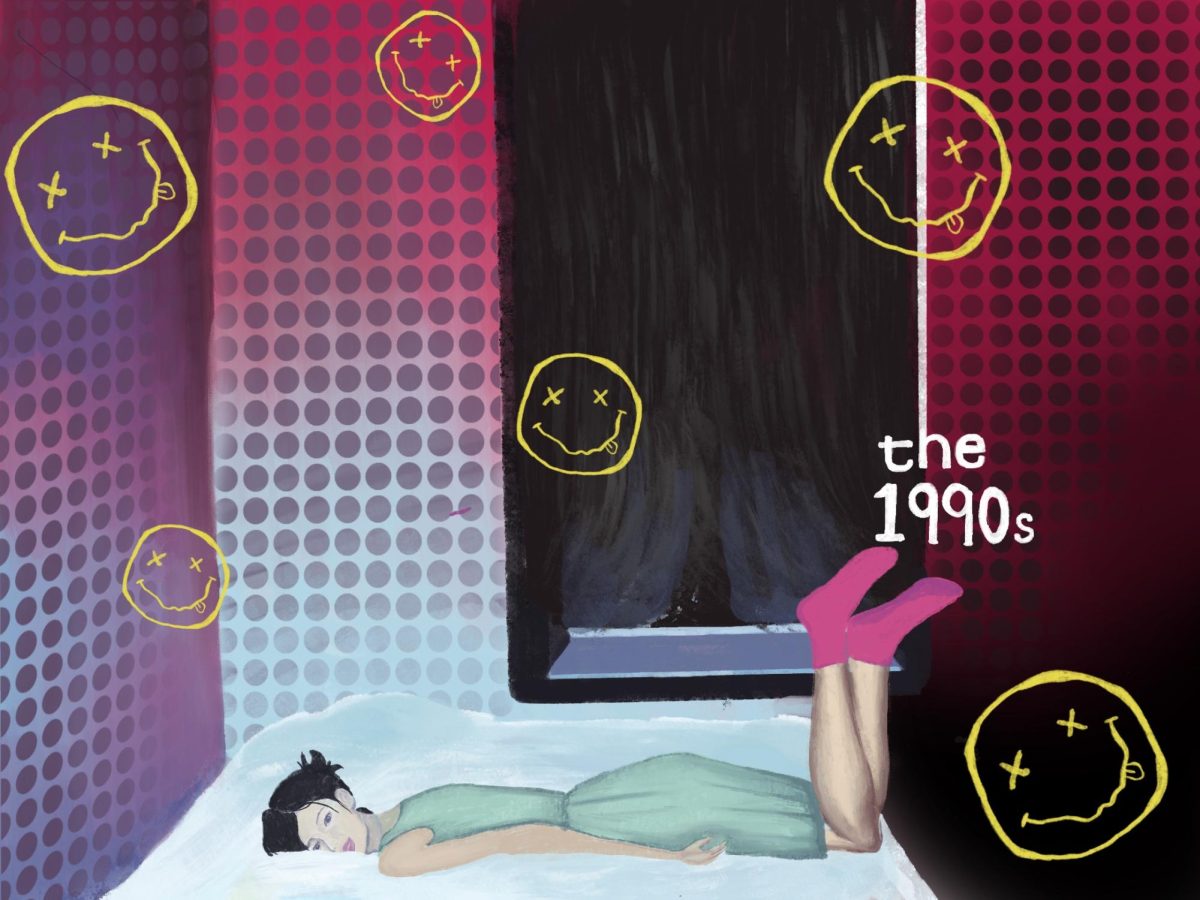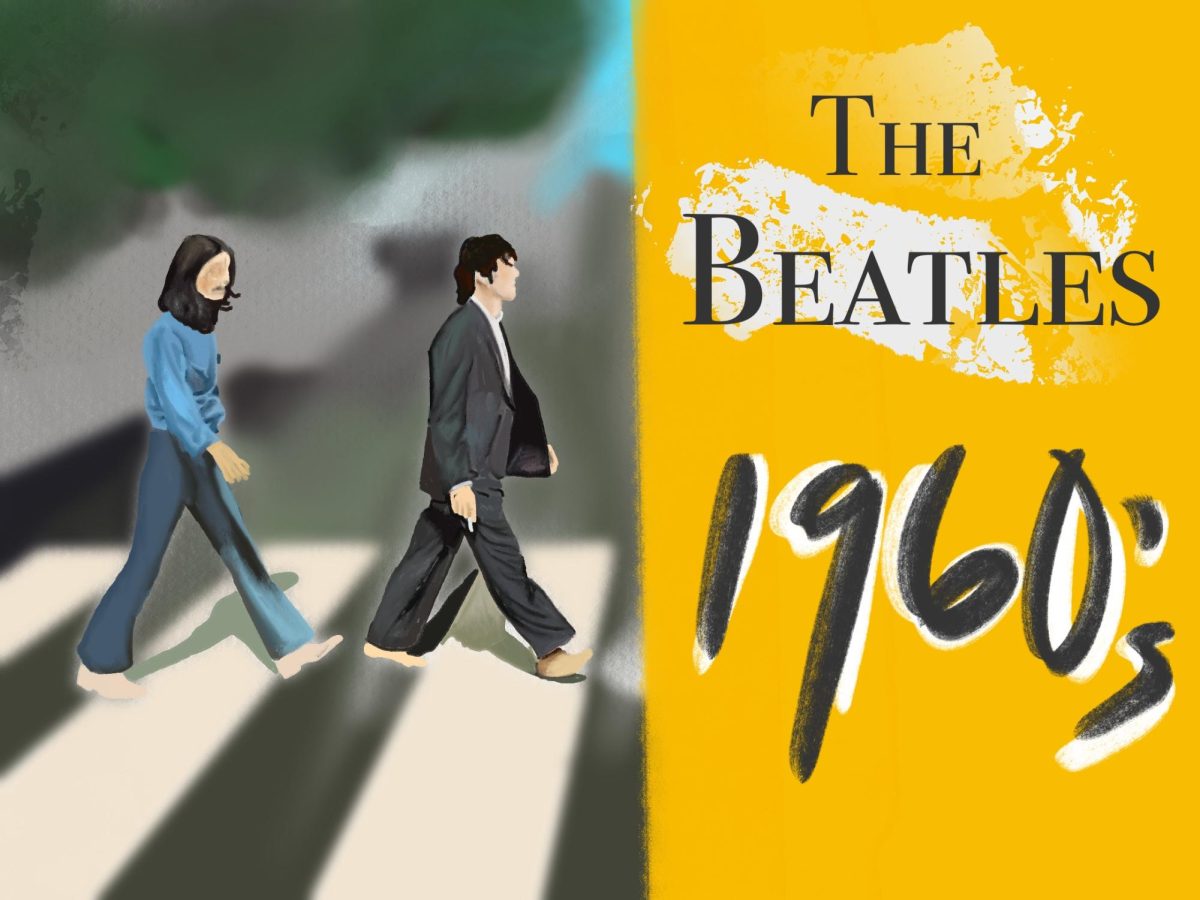The 1940s was a decade of transition for the world. It began amidst World War II and varying international conditions. For the United States, the war boosted the economy, but for countries in the fighting zones of the European and Pacific theaters, the 1940s began with exhaustion, loss, and economic devastation. When the war ended in 1945, the world was ready for a change. The musical era accompanying this decade was no different. Musical styles that had gained popularity in the recent decades started to decline, and newer genres were on the rise, paving a path for future genres like rock and roll. Additionally, in the United States, the war caused a surge in popularity for patriotic, positive songs.
Throughout the 1940s, big band music, characterized by large orchestras, brass instrumentation, and pop vocals, was widely listened to but on the decline. The genre, which gained popularity in the 1920s and steadily grew its audience over the next couple of decades, represented a “before” to much of the world: before the war, before worldwide loss, before the economic and international struggles that inevitably came with World War II.
Some of the best-selling records of the ’40s included those made by Glenn Miller and His Orchestra, Harry James and His Orchestra, Artie Shaw and His Orchestra… you get the idea. The decline of famous jazz musician Louis Armstrong’s career truly represented the end of this era. His popularity waned, and he was unable to lead a band of his own.
As people moved away from listening to big band music, songs that mainly featured vocals rather than instruments grew more popular. In the 1950s, this shift was evident. Some of the most famous jazz and blues musicians came from this new era, and one new genre appeared that would undoubtedly change the course of the music industry: rock and roll.
Additionally, the move toward featuring vocals and the surge in patriotic songs helped lay the foundations for country music. During the 1940s, the genre was initially referred to as “hillbilly” or “folk” but would eventually become known as “country” or “country and western.” The music evolved especially with the surge of post-war patriotism, and this allowed for the rise of artists like Hank Williams and, over the course of the next decade, Johnny Cash, Buck Owens, Loretta Lynn, and more.
The song that really drew me into the ’40s was “It’s Been a Long, Long Time” by Kitty Kallen and Harry James and His Orchestra. This big band piece has regained popularity in recent years due to its use in the Marvel Cinematic Universe. It has been played in multiple Marvel movies, remaining a central musical piece in the storylines of Steve Roger (Captain America) with the Winter Soldier and Peggy Carter.
The song begins (and ends) with the grand orchestra, but immediately after, the trumpet player takes the lead in the track. Then, a minute and seven seconds into the song, Kallen comes in with a classic ’40s voice. I’d say her voice reminds me of Audrey Hepburn’s vocals in “Moon River,” but that’s a couple decades too early. Nevertheless, there’s a distinct vocal quality that accompanied those decades as a result of the sound equipment and slightly accented voices of the times. As she sings, the orchestra, brass, and piano play behind her, perfectly accentuating her strong vocals and beautiful vibrato.
What really made me fall in love with the song, however, was the trumpet. In so many of the 1940s songs that I’ve heard, the trumpet is played on top of the rest of the orchestra, capturing the listener’s entire attention while simultaneously being supported by other instruments. The crisp, uniquely brass sound of the trumpet is like no other and ultimately kept me listening over and over.
Although mainly-instrumental music and big band pieces began to decrease in popularity during the 1940s, the decade produced numerous unforgettable pieces in both the “before” and “after” styles, paving the way for the music industry as we know it today. The ’40s deserve credit for beginning one of the largest shifts in modern music history while still exemplifying top standards for both styles.










































































